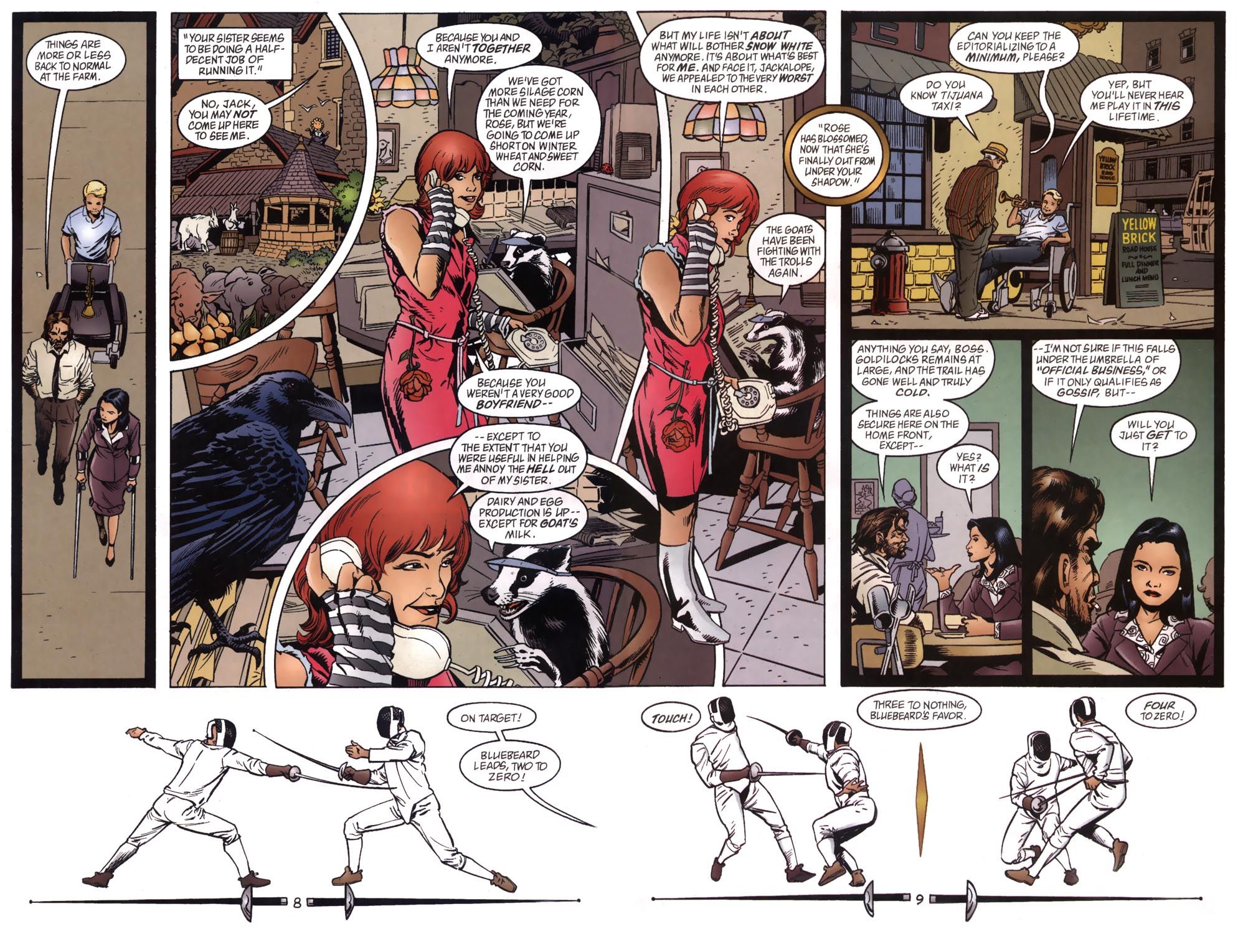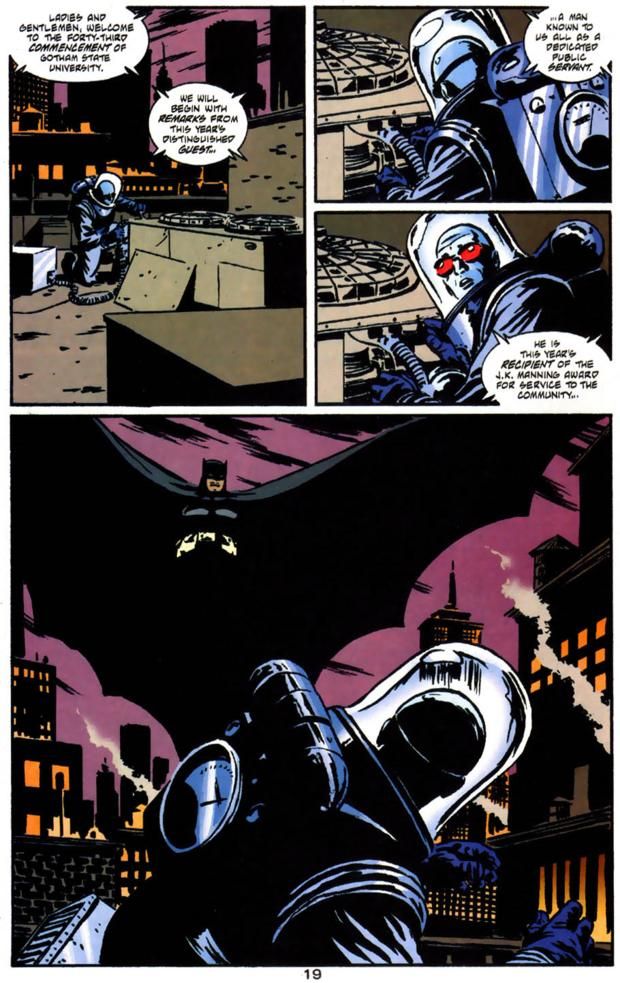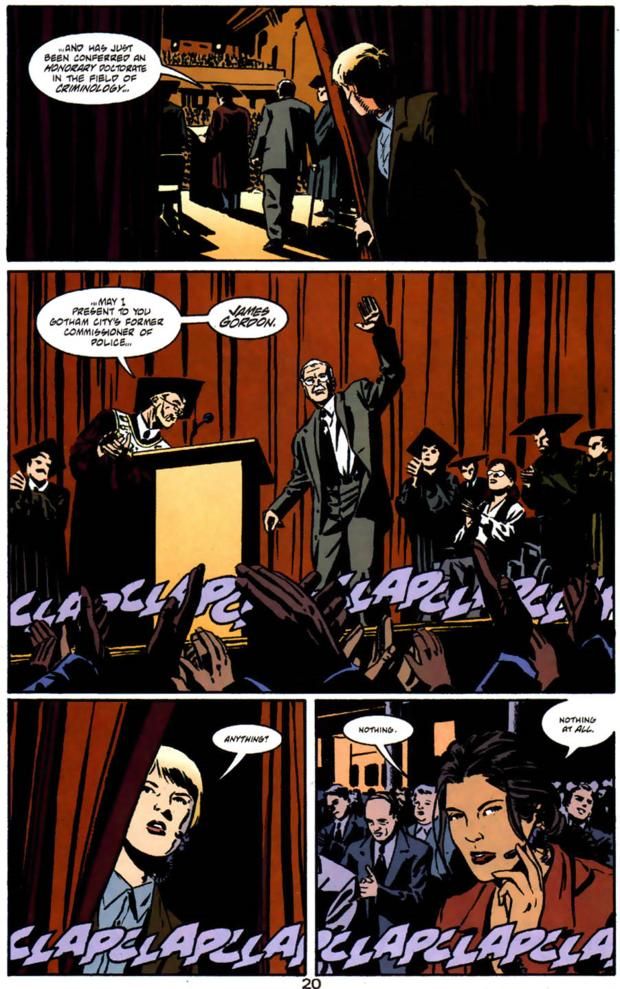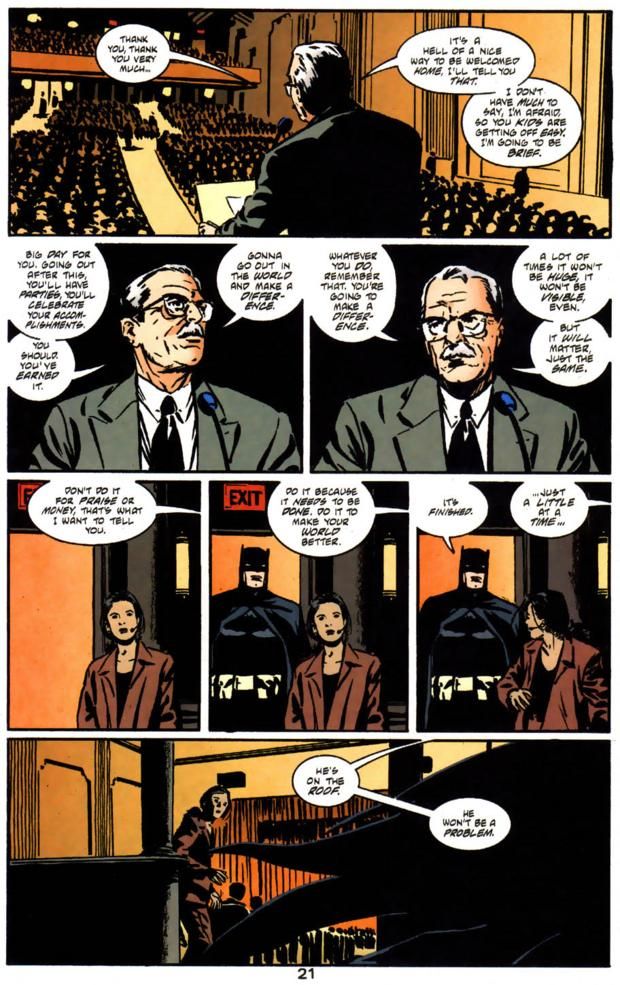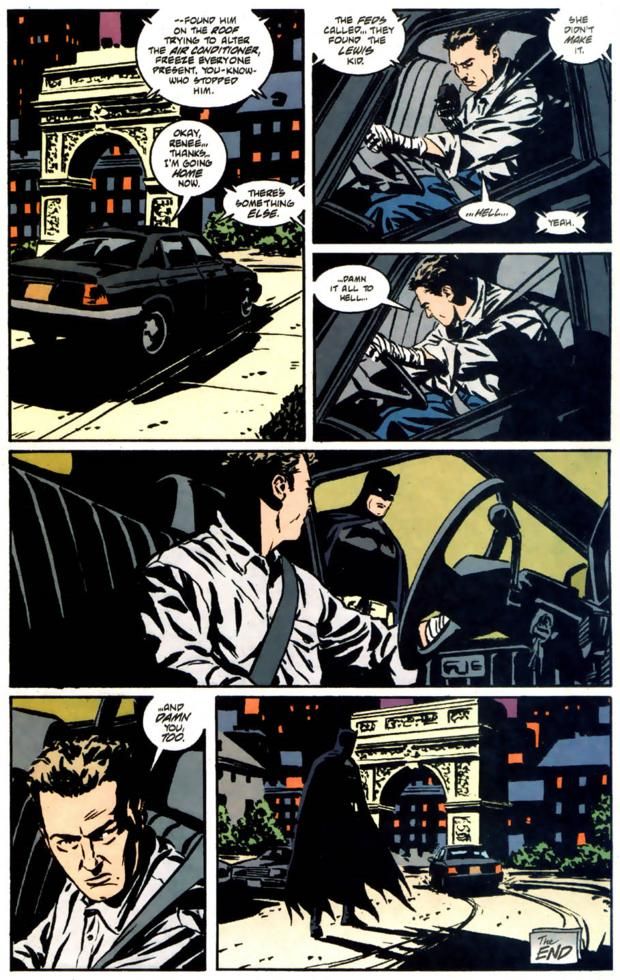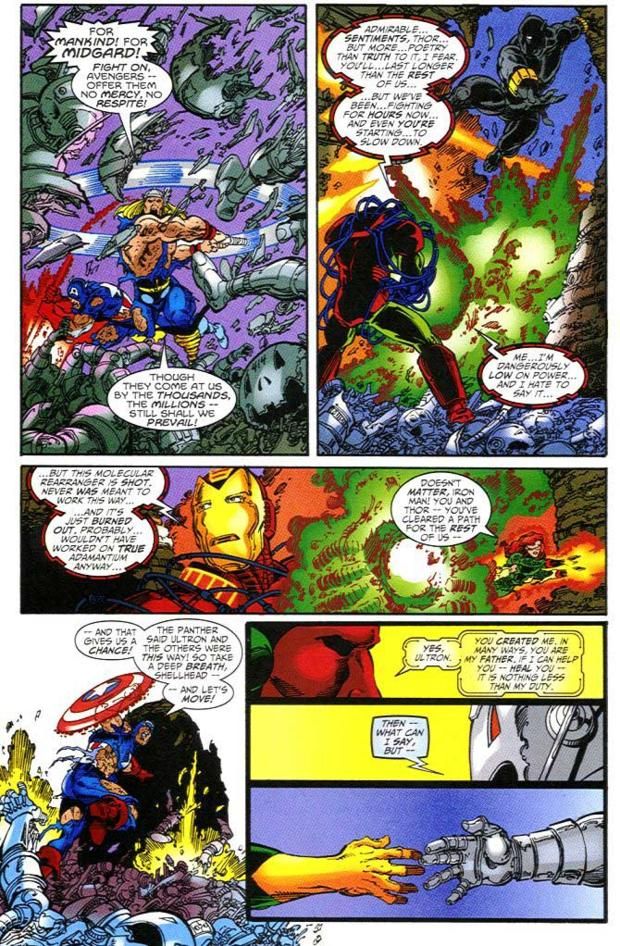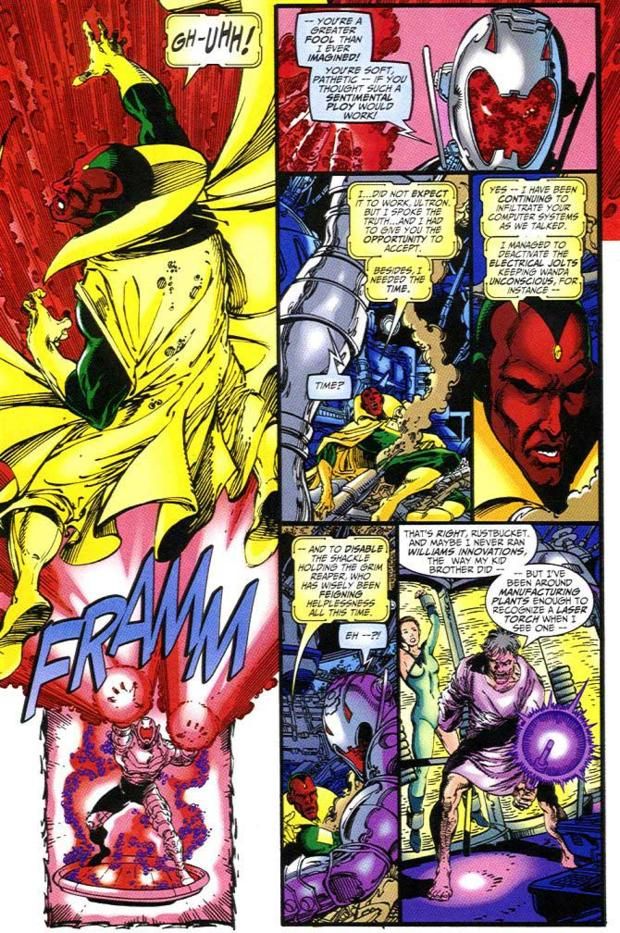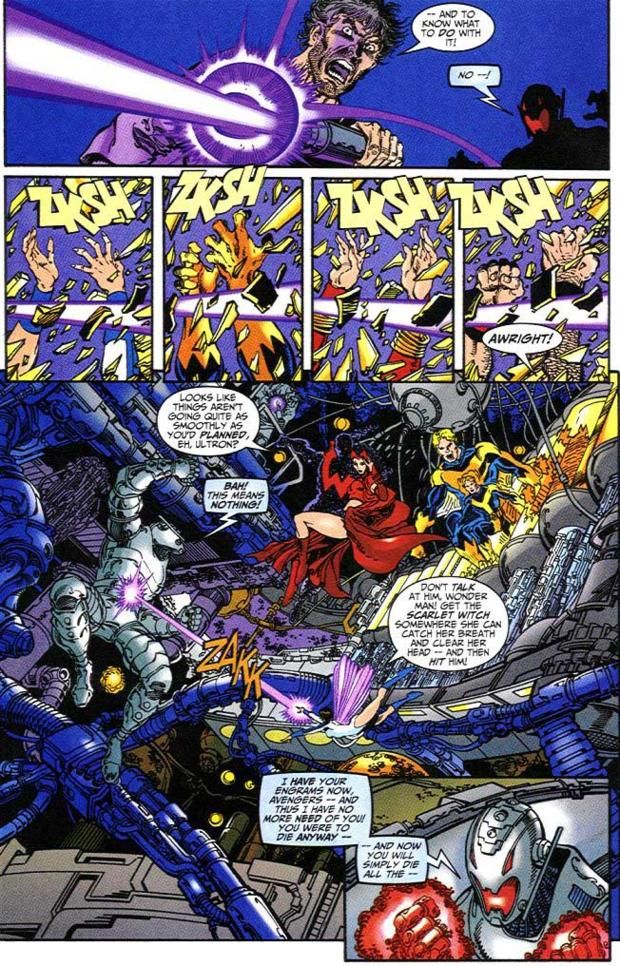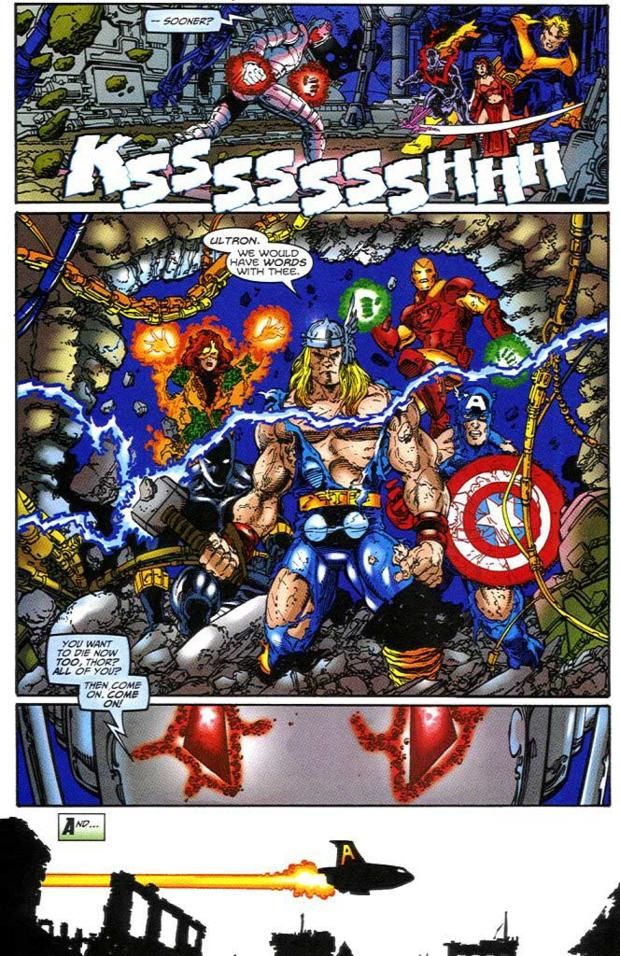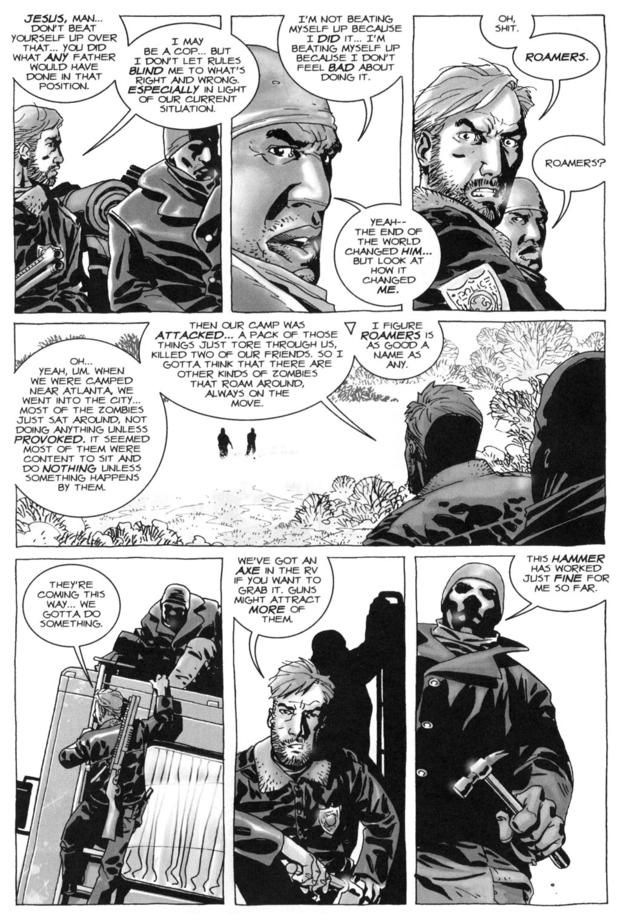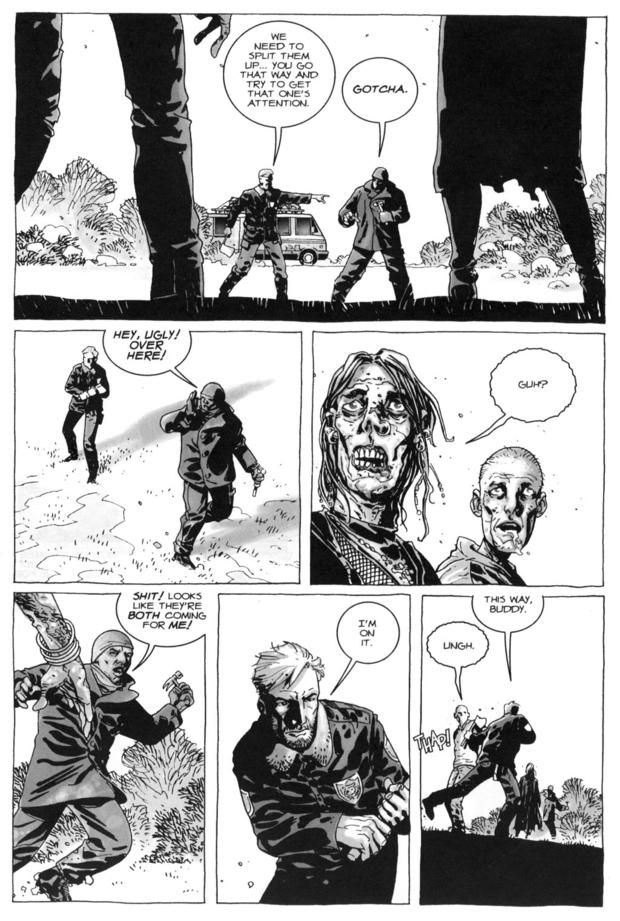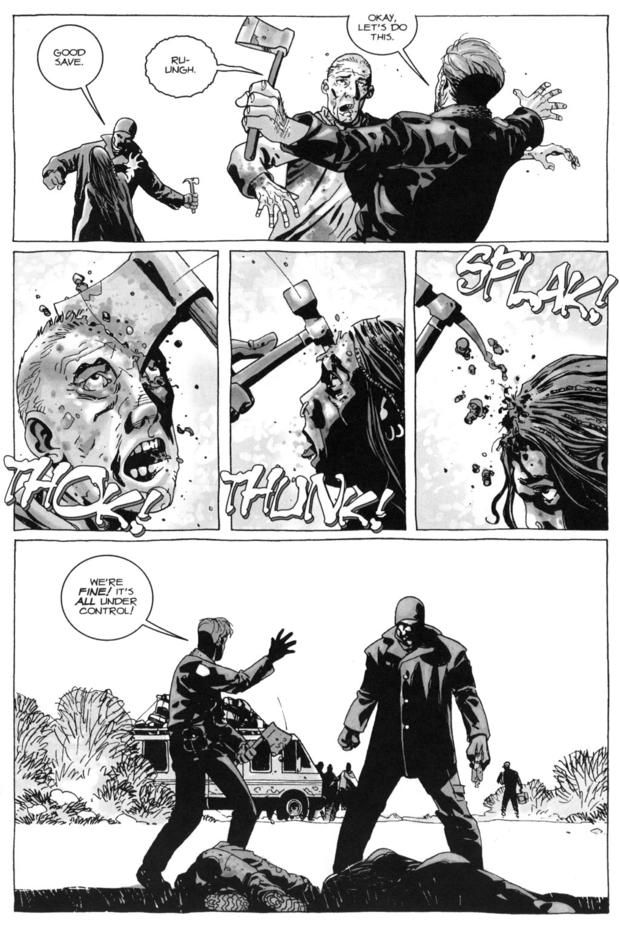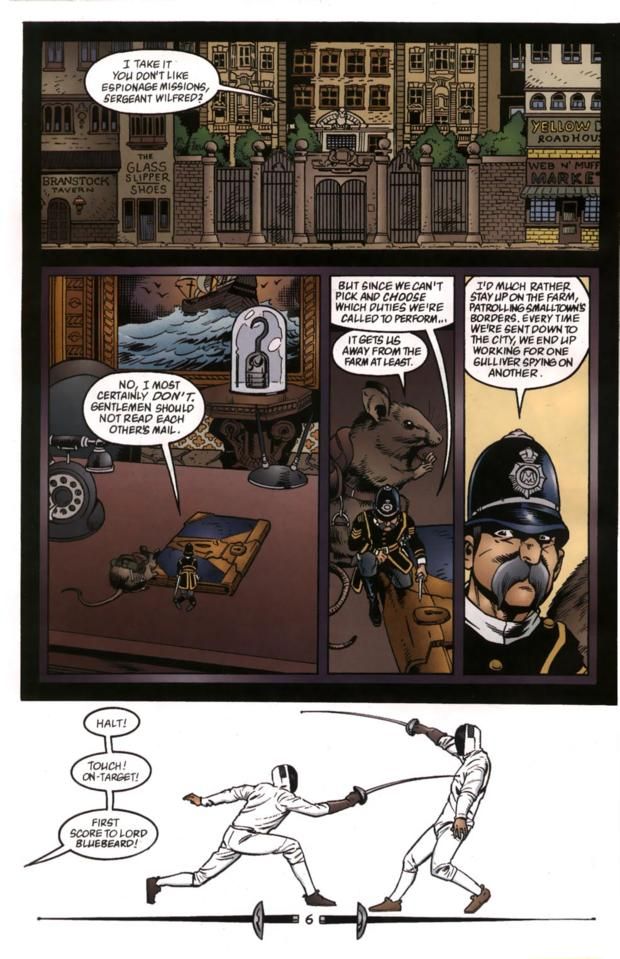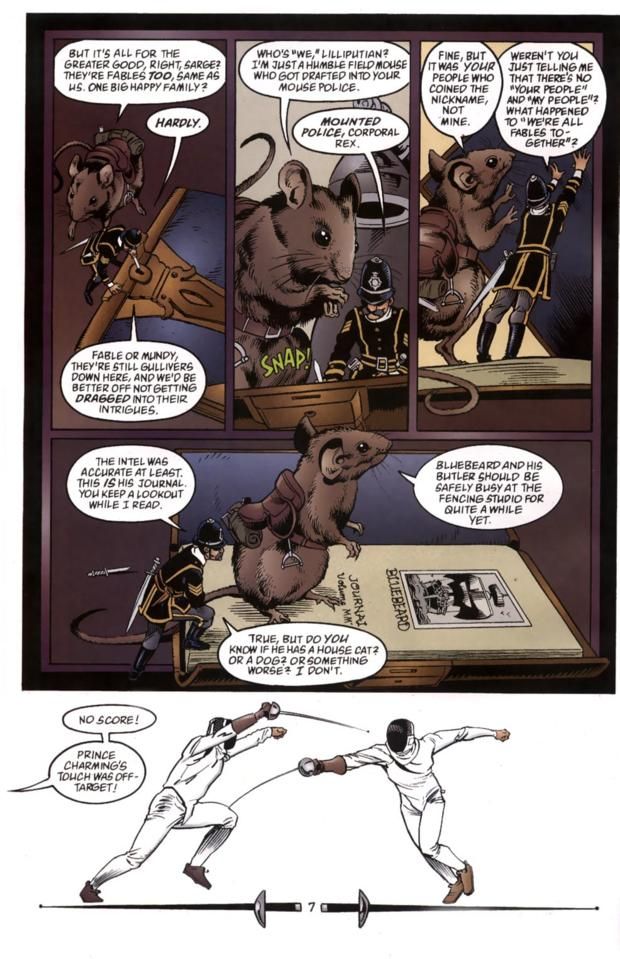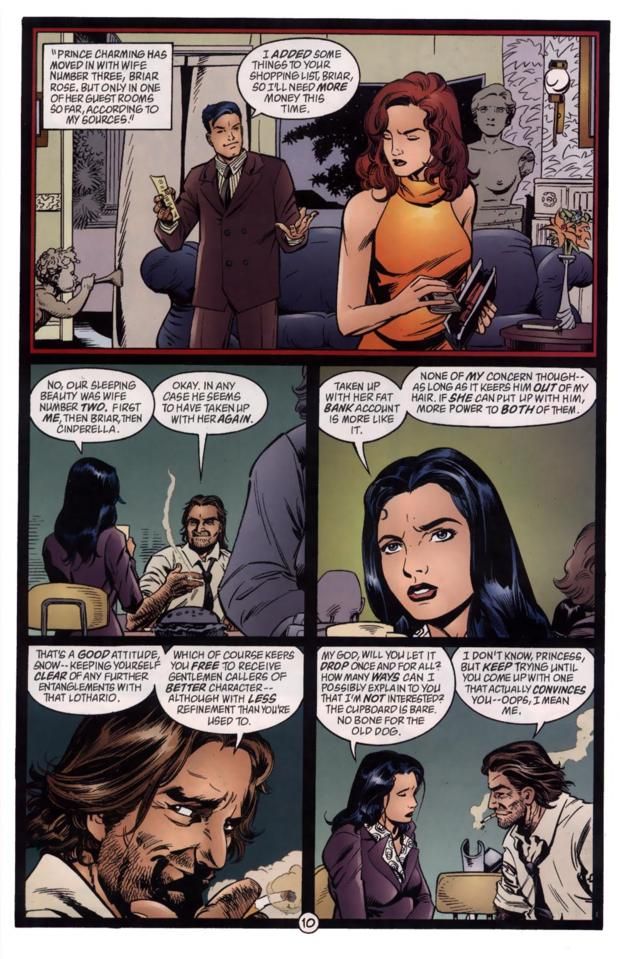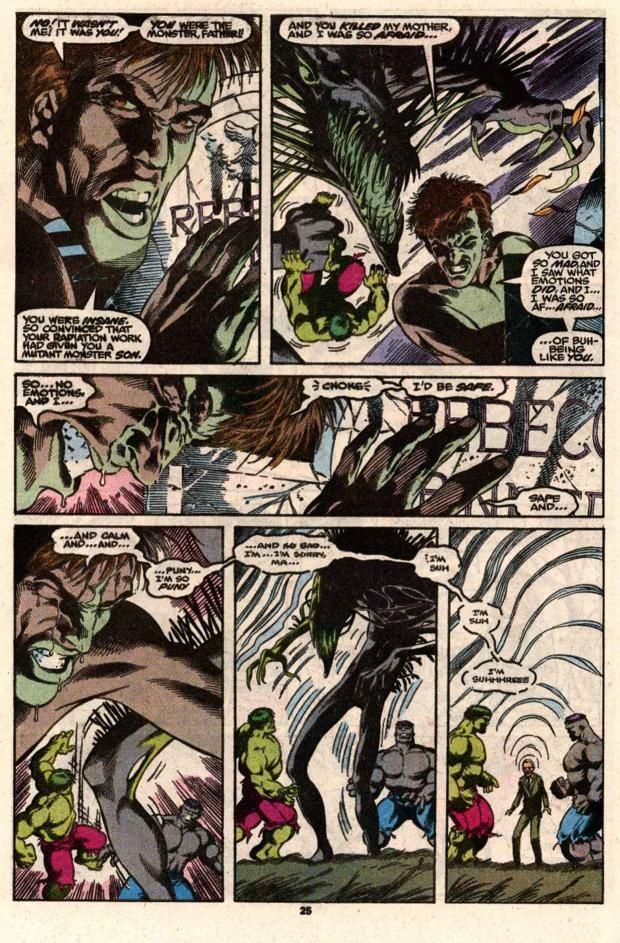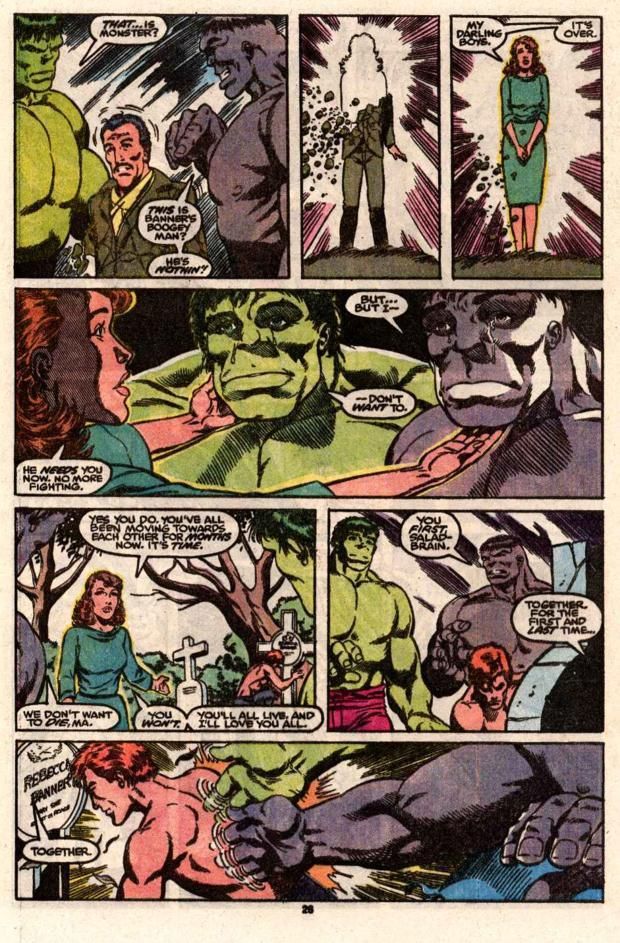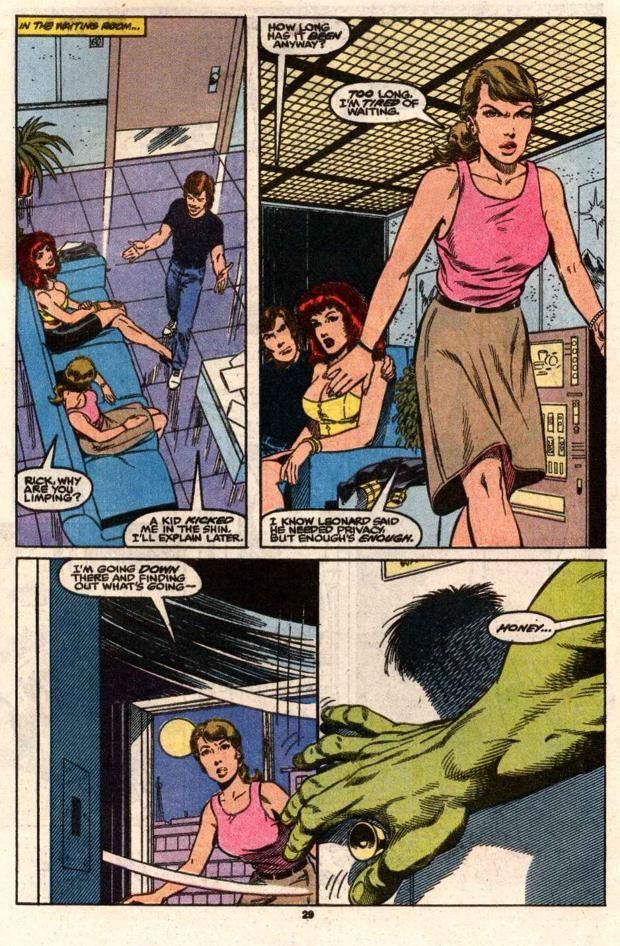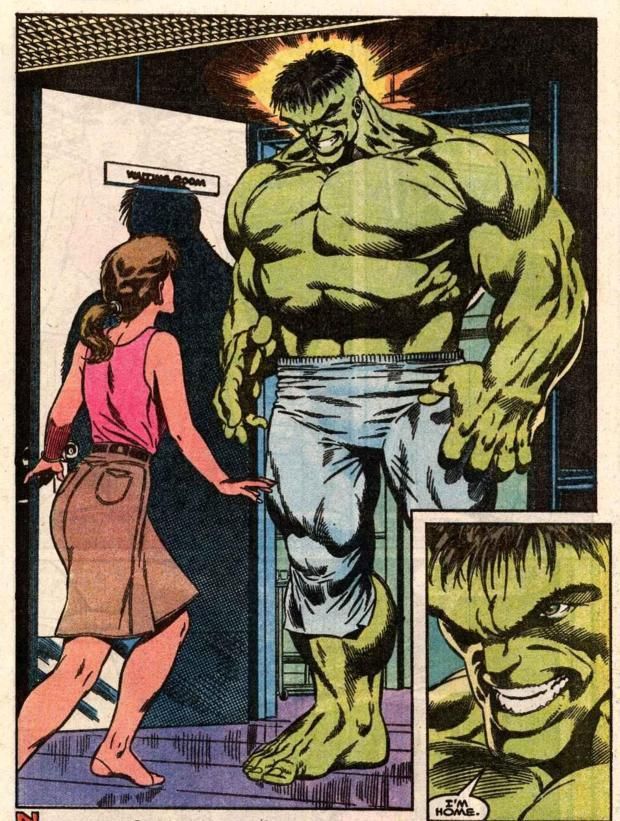You voted, now here are the results of your votes for your favorite comic book creator runs of all-time! We'll be revealing five runs a day for most of the month. Here is a master list of all of the runs revealed so far.
Here's the next five runs...
30. Greg Rucka and Ed Brubaker’s Gotham Central – 340 points (8 first place votes)
Gotham Central #1-40
Chuck Dixon featured the Gotham police department quite a lot in his Batman comics, and Doug Moench has a soft spot for both Harvey Bullock and Commissioner Gordon, but even compared to them, Greg Rucka seemed to have an uncanny interest in the Gotham police department. His level of interest was equaled by incoming Batman writer (Rucka wrote Detective Comics), Ed Brubaker, who also specialized in the sort of down-to-Earth police stories that also interested Rucka.
Therefore, after a storyline about the Gotham police department (where Commissioner Gordon is almost killed), the pair launched the acclaimed police procedural, Gotham Central.
The book had an intriguing concept - while the two writers would work together, mostly, it would split the book into a "night" shift and a "day" shift, and each writer would handle a shift. The book was ably drawn by the great Michael Lark with excellent inks by Stefano Gaudiano.
The book gave readers insight into what it would be like to work in the police department of a city that is mostly known for needing a dude dressed as a bat to help stop crime. As you might imagine, it gets a bit galling.
The first two-issue arc was co-written by Brubaker and Rucka and it dealt with Mister Freeze killing the partner of one of the detectives. Meanwhile, a kidnapped girl has been missing for quite some time. The cops try to stop Freeze on their own but when they realize that he is planning an attack on a ceremony commemorating retired Commissioner Gordon, they are forced to call in Batman for help...
Rucka and Brubaker really captured the frustration beautifully, don't they? They also had this clever idea about how the GCPD are not allowed to turn on the Bat-Signal themselves because doing so would officially involve Batman in their case and the legalities of such a move would be a real pain, so instead an unaffiliated worker actually turns on the signal (she was later given a great spotlight issue by Brubaker).
The most famous arc dealt with Renee Montoya's troubles with coming out as a lesbian.
The book was filled with nice characterizations and intriguing mysteries and drama.
Lark departed the book with #25, but due to artist Stefano Gaudiano staying on, the new penciler, Kano, was inked in such a way that the book maintained a high level of consistency.
Brubaker departed with issue #36, and rather than carry on all by himself, Rucka decided to close shop with issue #40.
Brubaker and Lark later went to work together on a memorable Daredevil run and Rucka even co-wrote a few issues!
29. Kurt Busiek and George Perez’s Avengers – 342 points (6 first place votes)
Avengers Vol. 3 #1-15, 19-56
When Avengers returned to Marvel after the Heroes Reborn storyline ended, putting Kurt Busiek and George Perez on the title was practically screaming, "Everything is back to normal, people! Please come back!"
In the first storyline, more or less every Avenger who ever was participated in the story, with Busiek choosing through all of them to pick his initial "perfect" team lineup, which included Busiek's attempt to bring Carol Danvers back to prominence, as well as elevate Justice and Firestar to a bigger place in the Marvel Universe.
Busiek's knowledge of Marvel history helped inform a lot of his stories, but his great attention to characterization was probably his strongest suit, as the book was filled with a lot of interesting character interactions. I especially liked the issue where Beast returned when he heard the news that his old friend, Wonder Man, was back from the dead.
While there was characterization work, there was also a ton of action, and George Perez did a fine job depicting it all, with the most notable storyline likely being the big Ultron storyline, Ultron Unlimited, which contained the classic scene with Thor and a bunch of battered Avengers burst through a wall at an opprtune time to tell Ultron - "Ultron... we would have words with thee." Probably the acme of Busiek and Perez' run, as it perfected that fascinating mixture between appreciating the Avengers' long and sometimes convoluted history and just doing awesome modern superhero stories...
It has to be noted that in order for Perez to hit such a timely deadline, he often did layouts that the great Al Vey would then finish (the pages above, for instance, were drawn in that style). Right before Perez left the series after about three years' worth of story, Perez would do looser layouts that Paul Ryan would then pencil and Vey would then ink Ryan's pencils.
After Perez left, Alan Davis had a quick run but Busiek's run ended with a series of artists, including Ivan Reis and Kieron Dwyer. The majority of Busiek's final issues were involved with the massive Kang War.
During his run on Avengers, Busiek also wrote the popular mini-series, Avengers Forever, with Carlos Carlos Pacheco.
28. Robert Kirkman, Tony Moore and Charlie Adlard’s Walking Dead – 351 points
The Walking Dead #1-current (#103)
The selling point of the Walking Dead is essentially that is is what happens in a zombie movie after the closing credits finish. What do you do in a world overrun by zombies? How do you manage to form some measure of society in a situation like that?
That's the problem facing Rick Grimes as he wakes up from a coma to discover that the world has changed much since he was shot on duty as a police officer. He manages to find his wife and son who have joined a sort of collective, led by Rick's former partner. The group is tight knit with an interesting mix of personalities. Rick soon takes over as the leader of the group, which leads to conflicts.
Tony Moore drew the initial six-issue storyline but Charles Adlard took over with issue #7 and has drawn the book ever since.
Since the series has become such a massive a success in its TV adaptation form, I worry about spoiling stuff, as the TV series has MOSTLY followed the story arc of the comic book. I don't think it is spoiling too much to note that the series is mostly about Rick's attempts to find SOME sort of life for his family and for his people, even as tons and tons of shit gets poured on top of them. Not just from the zombies themselves, but by evil people who use the zombie apocalypse to become tyrants. What can one good man do against such mounting terror? And at what point does he cease to BE a good man if he has to constantly lower himself to the level of his enemies?
As you have seen from the TV series, there are a number of particularly engaging personalities in the book, like the group scavenger, Glenn, or the former lawyer turned sharp shooter, Andrea, or the wizened old man, Dale, or perhaps the breakout character of the book (other than Rick, of course), Michonne, a normal woman has adapted to bad assery in a fashion unlike many others.
Because of the difficulty of spoiling the book, along with the fact that I wanted to show you a piece of art from Charles Adlard, I went with this scene where Rick meets Tyresse, a single father who is an important figure in the comic but has yet to be adapted into the TV series (and no, T-Dog is NOT Tyresse). As the two fathers talk, they discuss the very notion of morality in a world like this. Plus, you get to see some zombie killing! Can't have the Walking Dead without some zombie killing!
27. Bill Willingham, Mark Buckingham and Steve Leialoha’s Fables – 358 points (4 first place votes)
Fables #1-current (#122)
Fables is Bill Willingham's epic story concerning the adventures of the inhabitants of Fabletown, all characters who come from fairy tales and folklore, like Snow White, the Big Bad Wolf, Little Red Riding Hood, etc.
They live in Fabletown because they were driven out of the magical world that they used to live in (called the Homelands), by an evil villain known as the Adversary, who has conquered most of the Homelands.
The early stories followed mostly Snow White, who was the aide to the Mayor of Fabletown (Old King Cole) and Bigby Wolf (the Big Bad Wolf), who was the Sheriff of Fabletown, and their Sam and Diane relationship.
Here is a nice sampling from issue #13 showing the vast cast of Fabletown, as the Mouse Police (an elite mixture of Fable Mice, you know, like "Hickory Dickory Dock" and Lilliputians who team up to serve as an espionage squad for Bigby) investigate Bluebeard, while Bluebeard does a fencing exhibition against Prince Charming, while Snow White's sister, Rose Red, is on the Farm (the special extension of Fabletown for those Fables who can't mix with humans. Essentially, all the animal Fables)....
Later storylines revolve around the inevitable war between Fabletown and the Adversary's forces.
While the storylines of the book result in the basic framework of the comic, the key to the book is the character work that writer Bill Willingham does with the characters. To this end, he was greatly helped by the addition to the book of artists Mark Buckingham and Steve Leialoha with the second storyline (with some breaks here and there, Buckingham and Leialoha have remained the artists of the book ever since). Buckingham's attention to characterization is perhaps his greatest artistic talent.
Willingham slowly develops characters, and moves them from small roles to big roles without any real warning, so pretty much every character in Fables could be considered the star of the book. In fact, Snow White and Bigby Wolf are currently relatively minor characters in the comic after being the clear leads for the first part of the title.
After a dramatic confrontation in the 100th issue, the lives of the Fables are once more in a state of flux. It will be fascinating to see where they end up. Recently, DC launched a spin-off series called Fairest, which spotlights different Fables characters.
26. Peter David's Incredible Hulk – 365 points (7 first place votes)
The Incredible Hulk #331-359, 361-388, 390-467
What was probably most consistent about Peter David's run on the Incredible Hulk was that there was no consistency to the book, David was constantly taking the book in different directions, and it made for an eventful ride for readers.
When he took over the book in 1986, the book was in the middle of a storyline, but David picked it up without a hitch, and soon turned the book into a sort of odd road trip book, with Bruce Banner, Rick Jones and Clay Quartermain traveling together. At this time, the Hulk had become Grey again, and turned into the Hulk at night. During this time, Todd McFarlane was the artist on the book, and there was a notable encounter between the Hulk and Wolverine while on the road.
After an encounter with the Leader, the Hulk was feared dead, but he soon popped up in Las Vegas, working as a bouncer called Joe Fixit. Jeff Purves was the artist on these stories.
Eventually, Hulk hit the road again, and Dale Keown joined the book. He and David combined for an impressive run together, and during this run, David made probably his biggest change to the comic, having Doc Samson merge the various Hulk personalities (Banner, Grey Hulk and Green Hulk) together to form one powerful green Hulk whose personality was controlled by Banner.
This version of the Hulk was soon hired by the peacekeeping group, the Pantheon, to work for them as a peacekeeper. This was the status quo of the book for about forty/fifty issues.
However, this ultimately fell apart, too, and the Hulk went on the run once more, and then Onslaught happened, with Banner and the Hulk becoming separated - the Banner-less Hulk went on a bit of a rampage, but eventually Banner returned. Adam Kubert took over as artist for an acclaimed short run on the Hulk, and in his second-to-last issue, David had Betty Banner, wife of Bruce, die. David's last issue had Rick Jones in the future looking back at all the various stories that David had had planned for his run before his departure.
David's run was marked by a lot of character work, and also a lot of humor. The biggest vote-getters of all David's artist partners was Dale Keown

